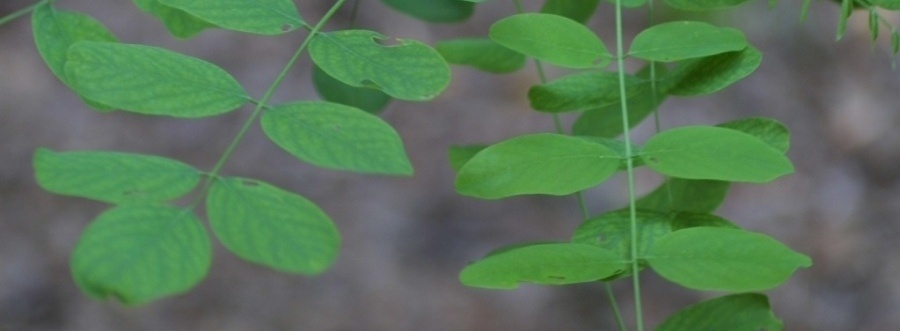
Classification
How does Robinia pseudoacacia fit in with other organisms?
To explain this, I'll break down the classification starting
from the domain all the way down to the species of the black locust.
Next, I have provided two phylogenetic trees to further explain
how Robinia pseudoacacia relates to other organisms. But first
let's start with the domain...
Domain: Eukarya
All organisms in this domain, including the black locust, have
cells with a nucleus and membrane-bound organelles. To see
other members of this domain, check out
Acanthaster planci,
Pterois miles,
Chironex fleckeri,
Amanita bisporigera, or
Eciton hamatum.
Kingdom: Virdiplantae
This kingdom is home to the plants! These organisms exhibit alternation of generations, a lifecycle
found in plants. Members of this kingdom obtain energy
through photosynthesis with specialized structures called
chloroplasts. The picture below shows what the cells of
organisms within this kingdom look like. For more examples of other plants, take a
look at
Asclepias syriacia,
Pastinaca sativa,
Rhododendron ponticum, or
Ephedra viridis.
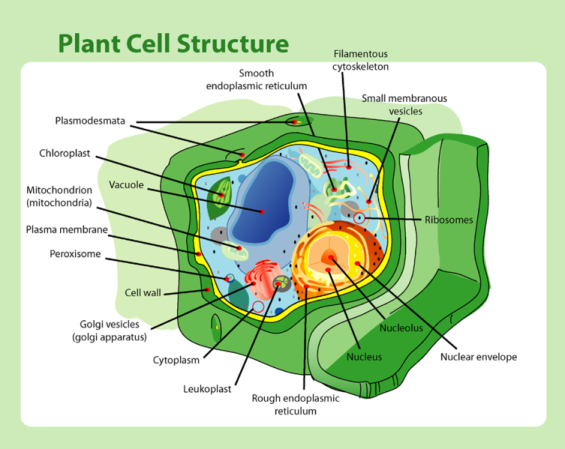
Wikimedia Commons
Phylum: Anthophyta
This phylum contains the flowering plants, or Angiosperms.
Plants within the Anthophyta are also characterized by the presence of flowers.
Have a look at the
American Mountain Ash to see another organism from this
phylum.
Class: Dicotyledonae
In this class, the veins in the leaves are organized in a
branching pattern as seen in the photo below. The flowers on
these plants have petals in multiples of four or five. Some
other examples of members from this class include the
Poisonous Primrose, apple trees,
oak trees, sunflowers, peas and cacti.
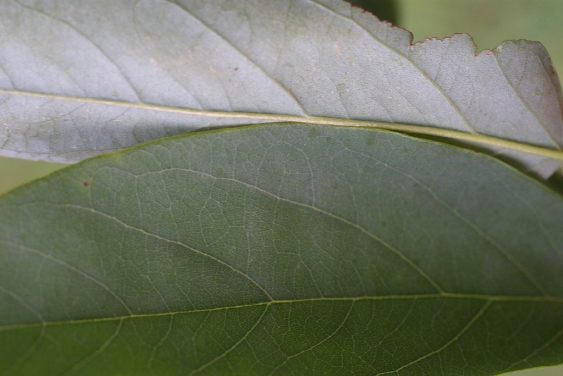
Steven J. Baskauf, 2002
Bioimages
Order: Fabales
Organisms in this class possess pods containing
seeds that are aligned in a row. Also, it is common for
organisms to exhibit symbiotic relationships with nitrogen
fixing bacteria. Herbs, vines, and shrubs can be found in
this order along with Robinia pseudoacacia.
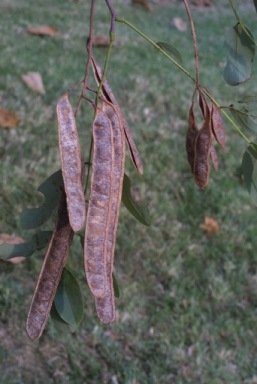 Family: Fabaceae
Family: Fabaceae
This is known as the legume family because organisms within this
family grow fruit
called legumes, or pods. These fruits come in a variety of
shapes and sizes. Seeds and fruits are typically dispersed by
wind, and again, nitrogen fixation is a common feature.
Peanuts and peas are two examples of organisms that are
classified under this family.
Genus: Robinia
This includes many deciduous trees and shrubs native to North
America. Fragrant white and pink flowers can be
found on the organisms in this genus. Steven J. Baskauf, 2002
Bioimages
Species: Robinia pseudoacacia
Now we’ve reached the black locust itself! This tree has leaves
that stay a light green from spring to winter. As I said
on the home page, this tree possesses fragrant white flowers
that bloom in the spring and early summer. These flowers are
followed by smooth brown pods that contain seeds in the fall.
Phylogeny
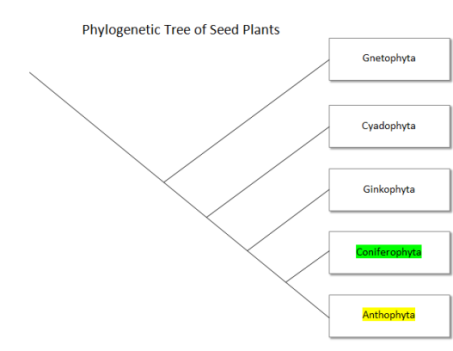
Jessica Klebs, 2013
The phylogenetic tree above depicts the relationships among seed
producing plants. As you can see, Anthophyta, the phylum Robinia
pseudoacacia belongs to, is highlighted in yellow. Next to it, the
phylum Coniferophyta is highlighted in green. This is the phylum
of plants to which the black locust is most closely related. The
phylum Coniferophyta includes the Gymnosperms. These plants
produce exposed seeds with no coverings.
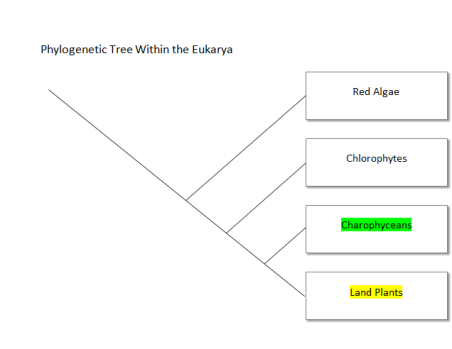
Jessica Klebs, 2013
This second phylogenetic tree shows which groups the land plants as a
whole are most closely related. The kingdom of the land plants,
highlighted in yellow, is where you'll find Robinia pseudoacacia.
Highlighted in green next to the Land Plants is Kingdom Charophyceae,
which is the closest in relation to the land plants. The
charophyeans include the green algae, the group that is believed to have
given rise to the land plants.
Navigate to the habitat page next to
find out where Robinia pseudoacacia lives.
Return Home